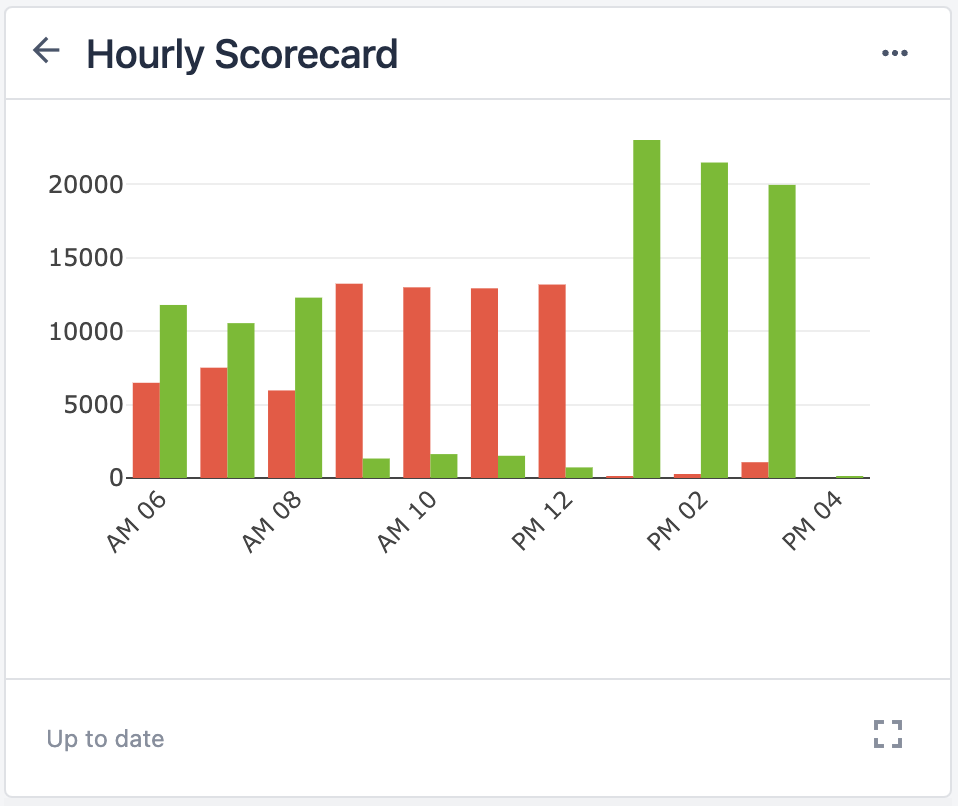To download the app, visit: Library
This Article summarizes how the Shift Starter Meeting application is structured and built.
Purpose
The Shift Starter Meeting app is developed with the specific needs of line leaders and operators in mind. This vital tool assists in conducting daily meetings that are integral to successful operations.
Setup
The app focuses on key operational aspects including Safety, Quality, Scheduled Procedures, Performance, Today’s Target, and Attendance. Each topic can be discussed thoroughly with the opportunity to update information in real-time during the meeting.
The 5S step is an extra step that can be integrated into the meeting workflow. Presently, no step leads there. While the 5S isn't needed in daily meetings, it can be added to the weekly ones. To include it, a button with Trigger logic must be set up to direct users to this Step.
Tables Used
The application uses the Order Materials, Operator Activity History, Users Table, Scheduled Procedures, Sample Inspections, and Safety Incidents Tables.
The Order Materials table is used in the 'Today Target' and 'Today Target - New Order' steps. It contains the 'Get Order 1' query that assists in creating a new order ID in the 'Today Target - New Order' step.
The Operator Activity History table is utilized in the 'Availability/Attendance' step. The Users Table is also used in the 'Availability/Attendance' and 'Plan Attendance' steps.
The Scheduled Procedures table is employed in the 'Scheduled Procedures', 'Schedule Procedure', and 'Create Safety Event' steps.
The Sample Inspections table is called upon in the 'Additional 5s' step. It comprises 5 queries: 'Standardize', 'Shine', 'Sort', 'Sustain', 'Set in Order'. Each of these queries carries two filters to set the time and an aggregation to sum the results for the designated time.
Lastly, the Safety Incidents table is used in the 'Safety', 'Create Safety Event', and 'Safety Event History' steps.
App Structure
The first Step Group in the app is Scheduled Procedures, which consists of two steps. The first step, also called Scheduled Procedures, allows users to view the procedures scheduled for the day. Users have the ability to select, reassign, or reschedule these procedures as needed.
The second step is accessible from the Scheduled Procedures step. In this step, users can create a new procedure. While on this step, users have the capability to create new Records with the new procedure in the 'Scheduled Procedures' table.
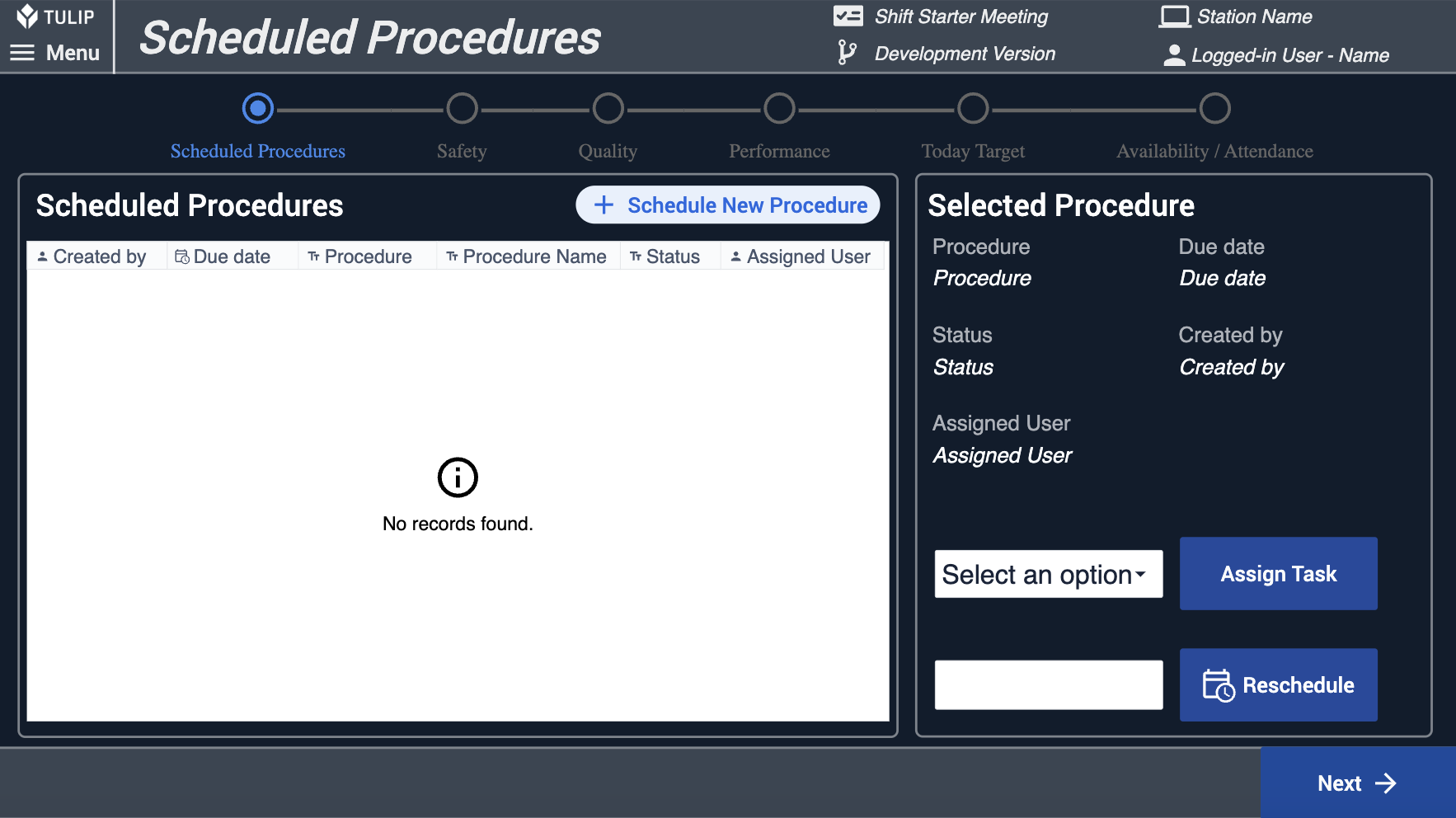
The second step group in the app is Safety, which comprises three steps: Safety, Create Safety Event, and Safety Event History. On the Safety step, users can view analytics connected to previous safety events and a table containing open safety events. If a user selects an open safety event, they can comment on it, and the comment will be saved in the corresponding event's comment field.
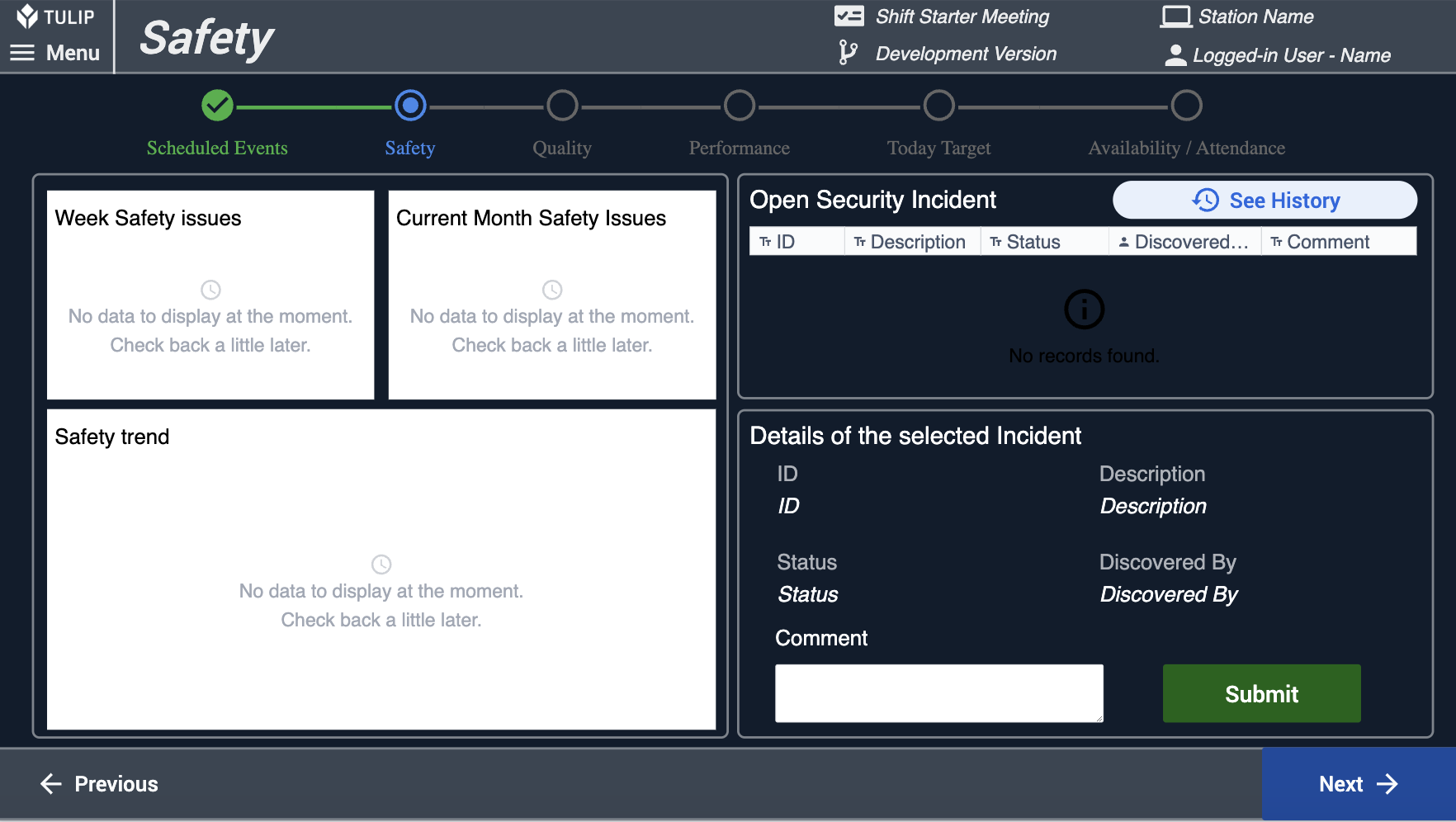
Both Create Safety Event and Safety Event History steps are accessible from the Safety step.
On the Create Safety Event step, users can generate a new event by creating a table record in the 'Safety Incident' table.
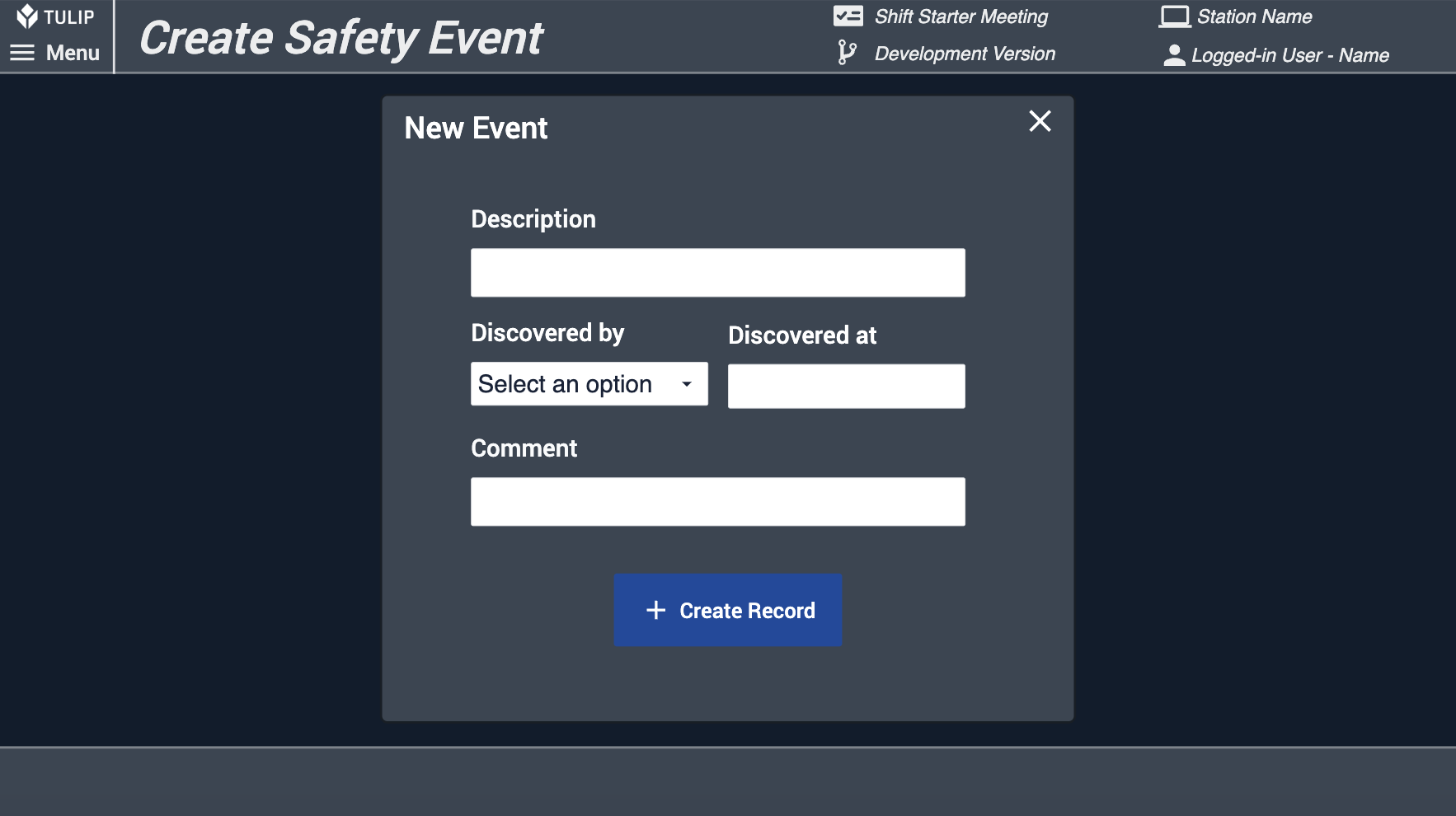
The Safety Event History step allows users to search within the 'Safety Incident' table. They can select an incident and review its details.
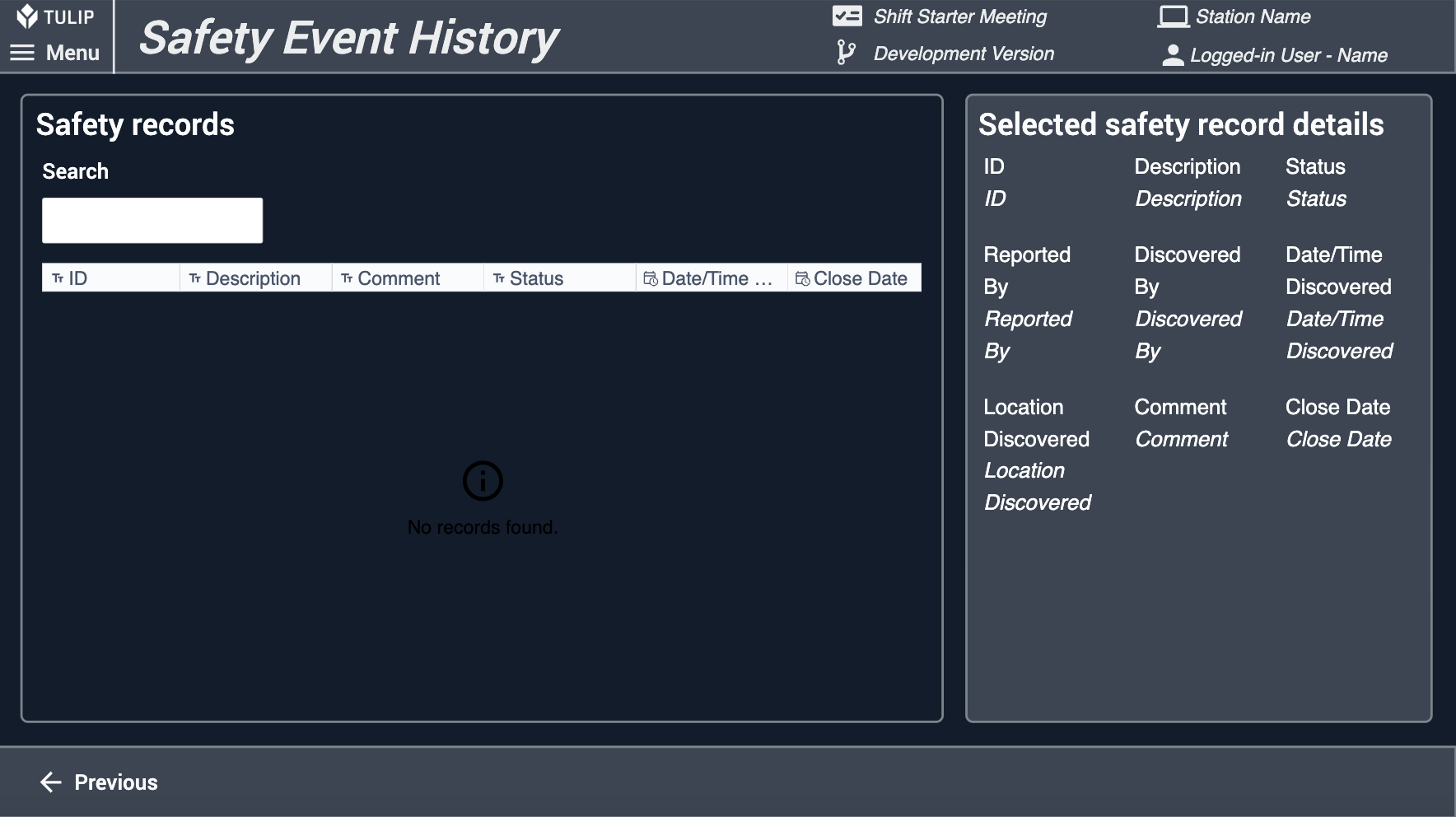
The next step is the Quality step. In this step, users can view Analyses related to quality measures. They also have the ability to comment on these analyses. Such comments will be saved as a part of completion data.
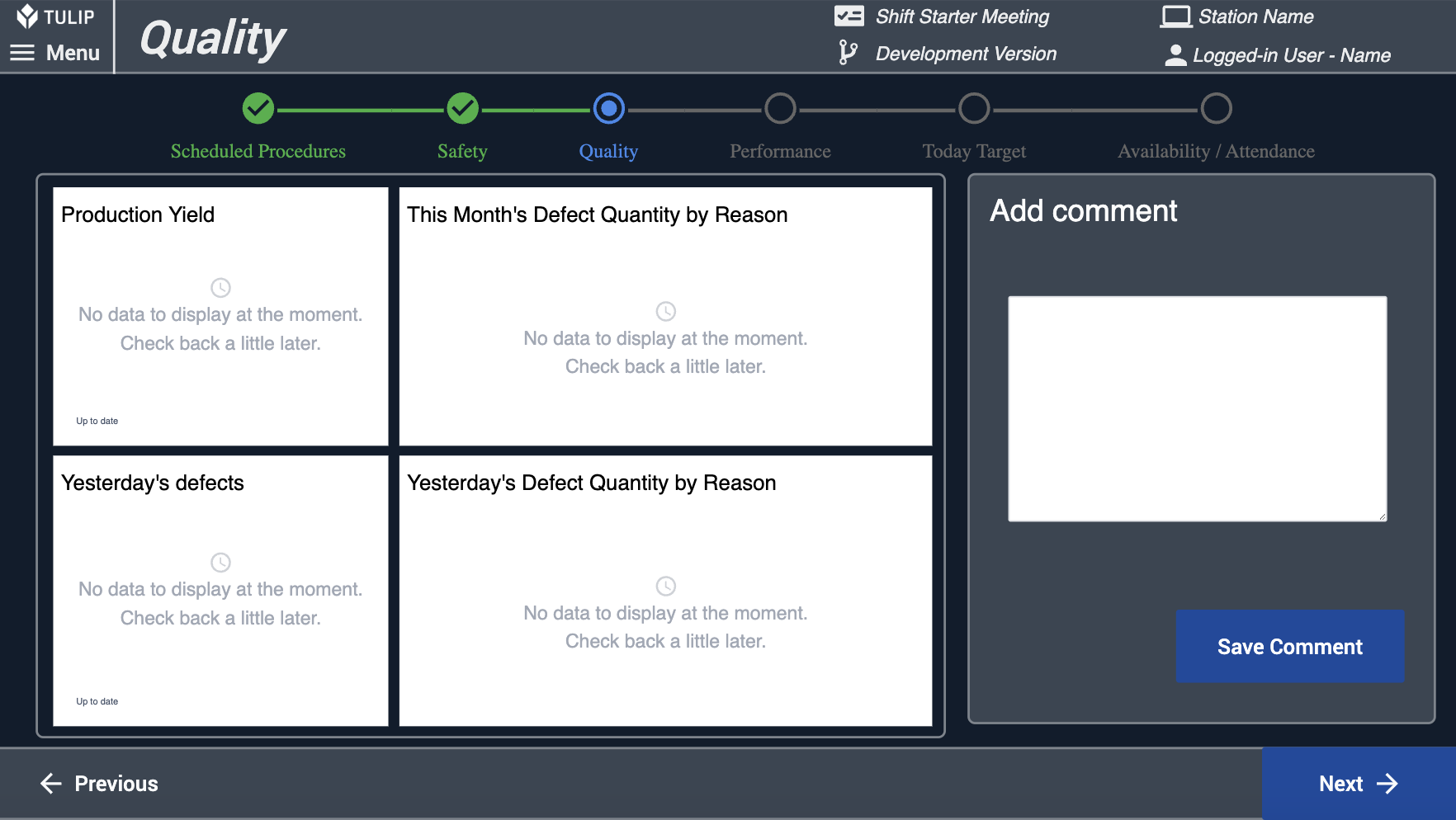
The next step is the Performance step. Similar to the Quality step, users can view analyses related to performance and comment on them. These comments will be saved as part of the Completion data.
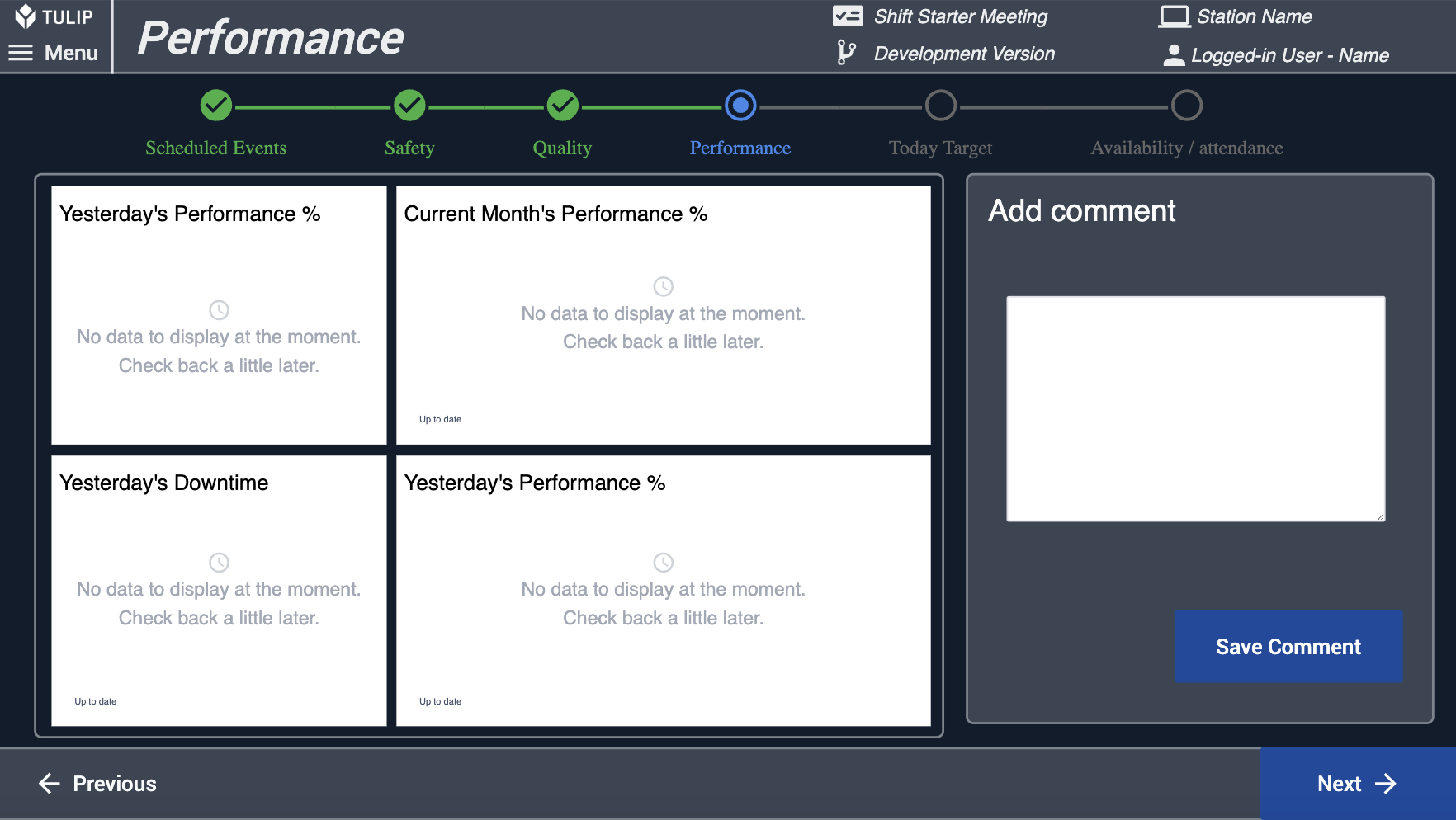
The Today Target step group follows the Performance step. It contains two steps: Today Target and Today Target - New Order.
In the Today Target step, users can view analyses regarding the daily work orders. You can reschedule the work orders if needed.
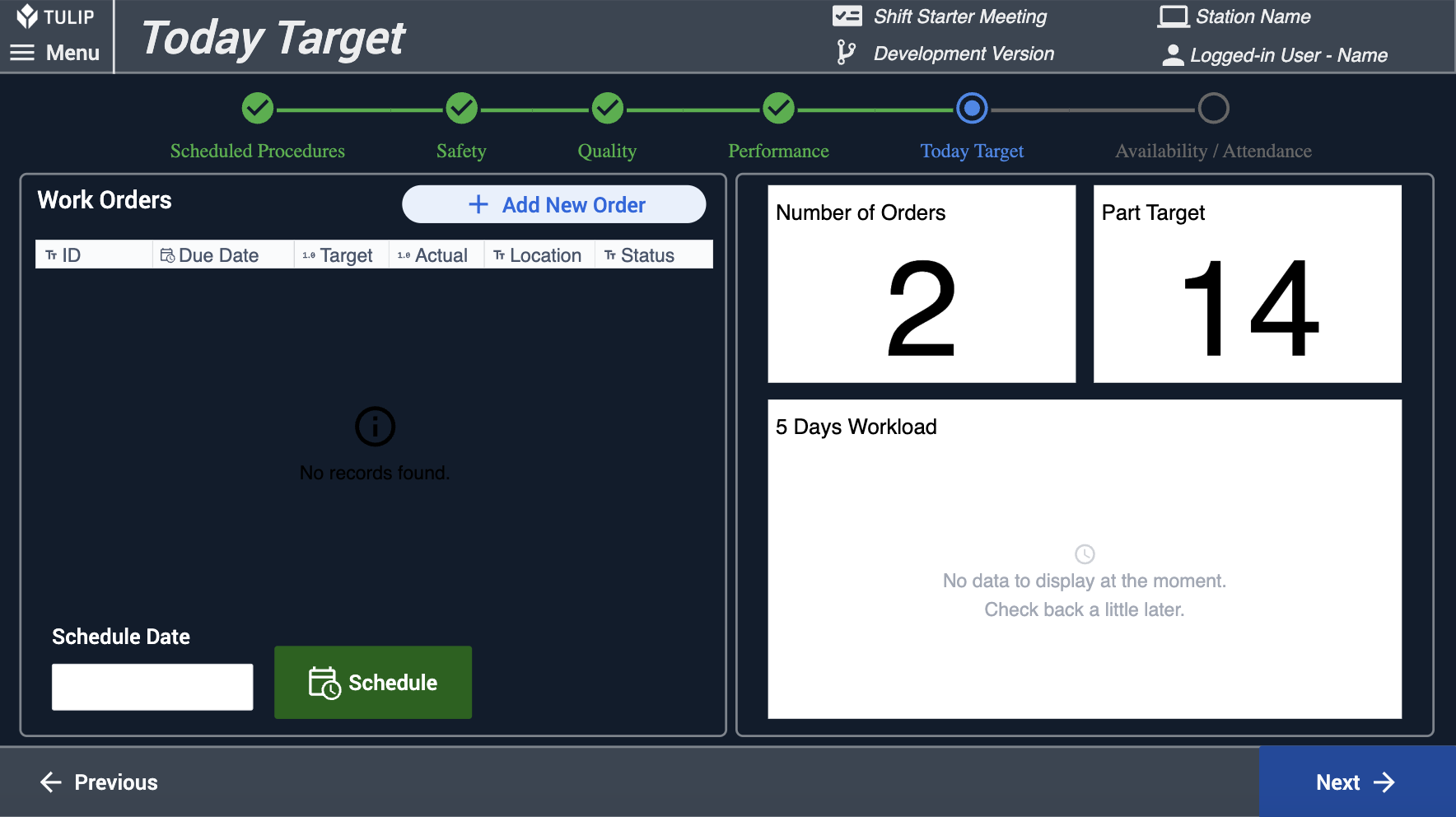
The Today Target - New Order can be accessed from the Today Target step. In this section, users have the capability to create new work orders
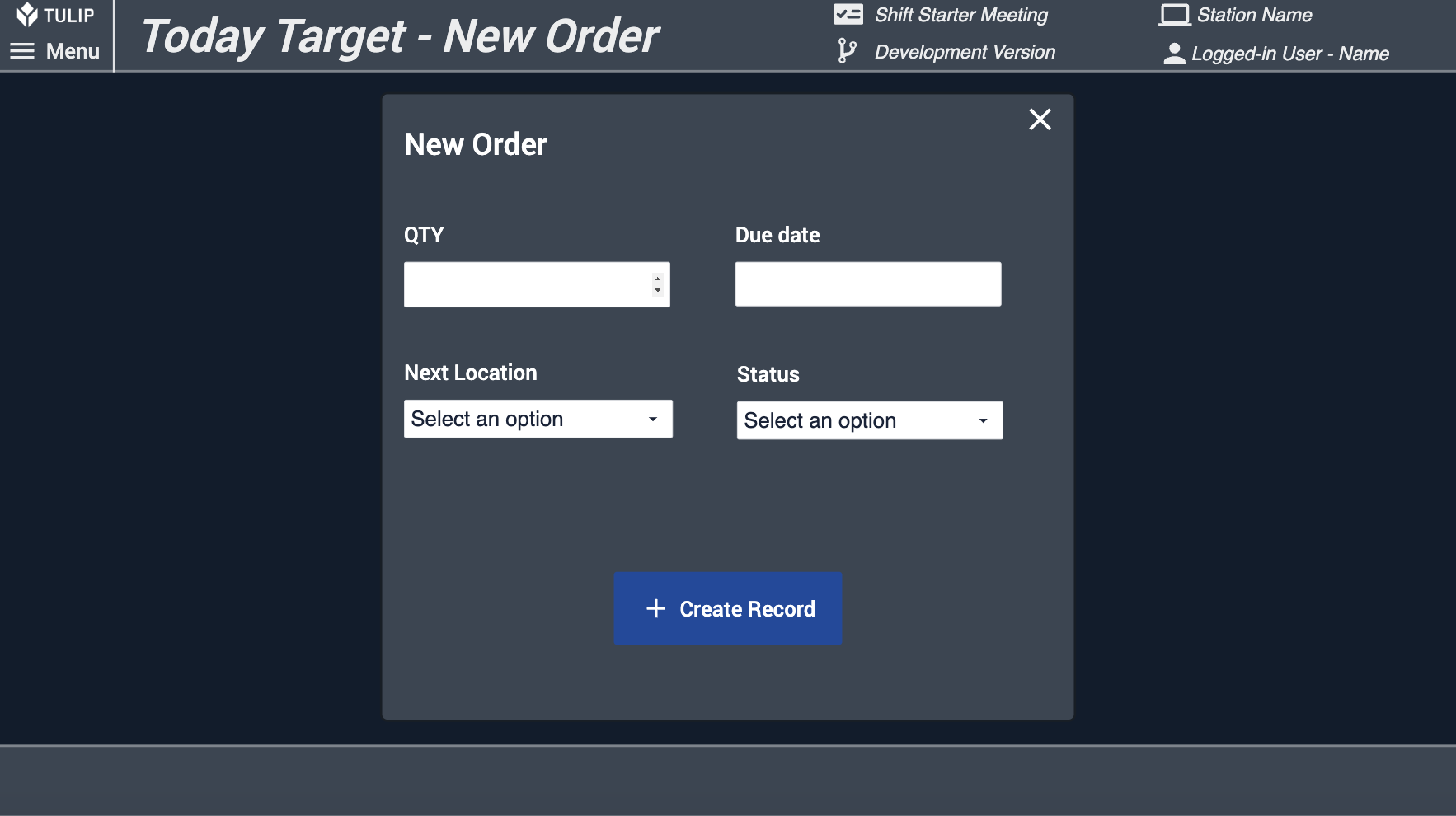
This follows the Availability/Attendance step group, which contains two steps: Availability/Attendance and Plan Attendance.
On the Availability/Attendance step, users have the ability to view both the User Table and the Operator Activity History Table. They can log the day's attendance into the Operator Activity History Table. By selecting an individual from the User Table and clicking either the 'Present' or 'Absent' button, a new record appears in the Operator Activity History Table. This action also updates the status color in the User Table, providing immediate visual feedback about each person's attendance status.
Moreover, this step offers a Complete button. Once users are finished with their tasks, they can click on this button, which finalizes the app's operations and saves all variables into the completion data.
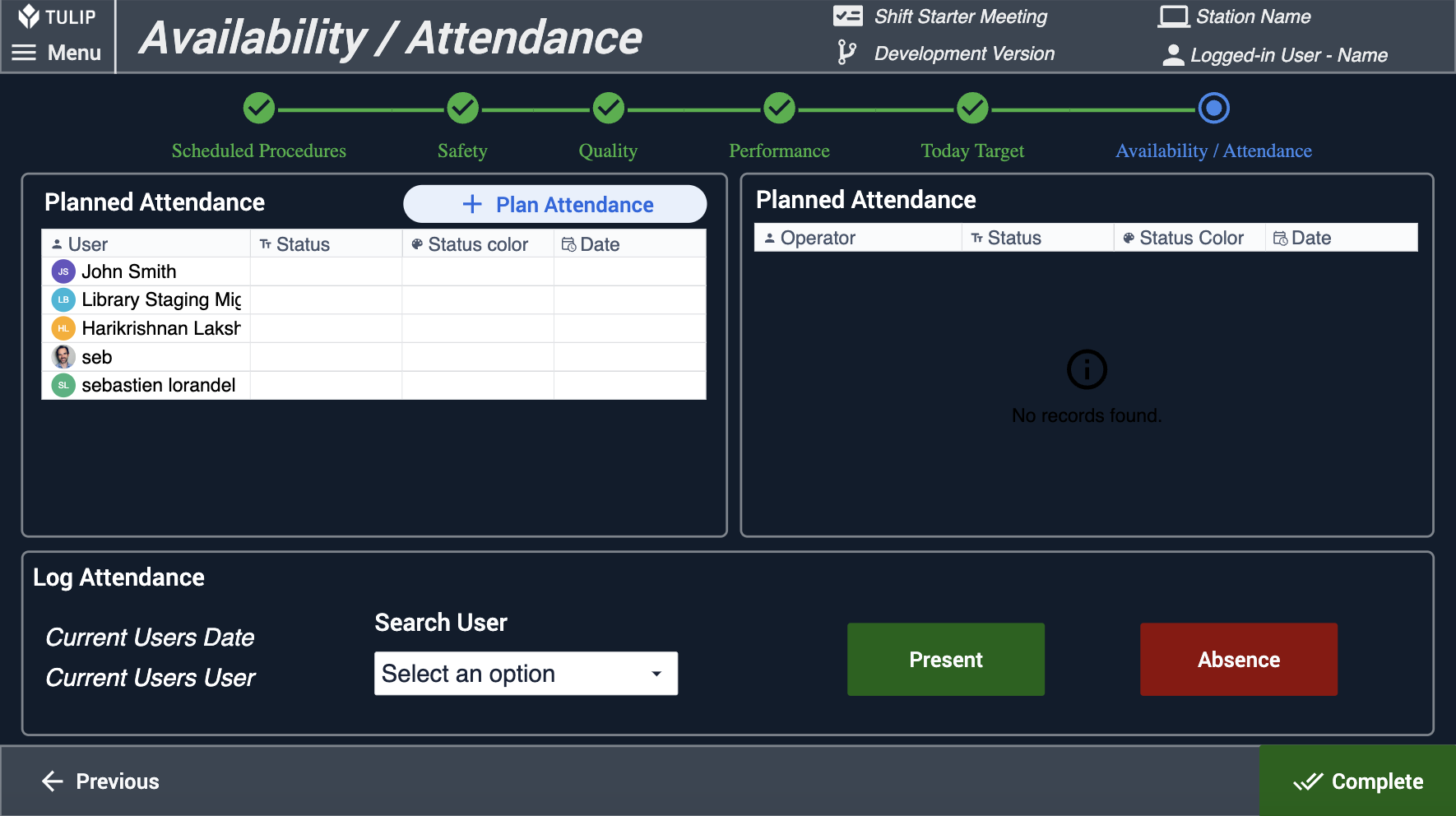
The Plan Attendance step can be accessed from the Availability/Attendance. In this step, users have the option to plan future attendance. They can select an individual from the User Table and a future date, then click either the 'Planning for Attend' or 'Planning for Absence' button. Doing so will update the User Table with the detailed plan.
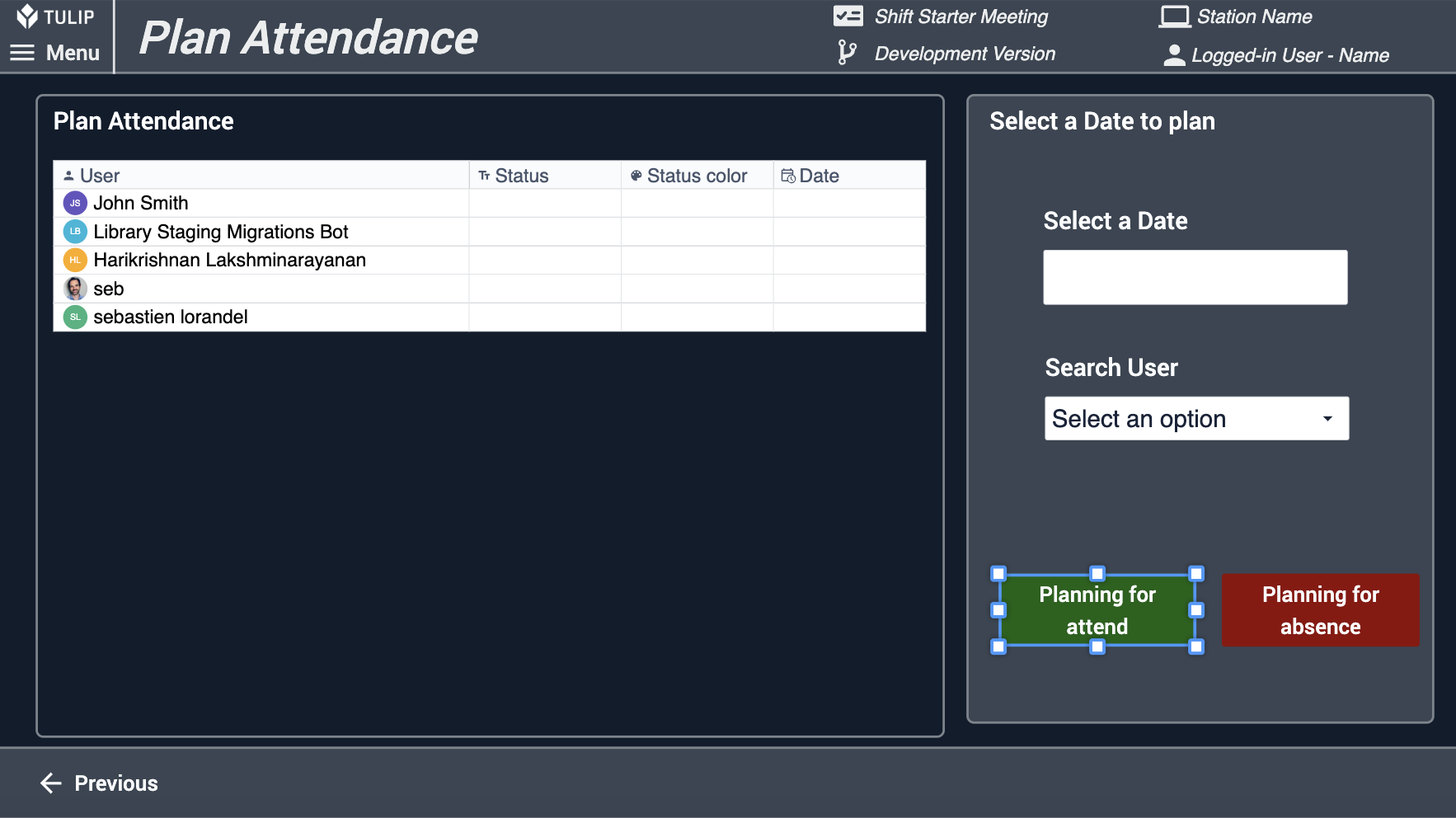
The last step, referred to as the 5S step, is not accessible while the app is running. It's an optional additional step that users can incorporate if they want. In this step, users can search for 5S scores according to specific dates.
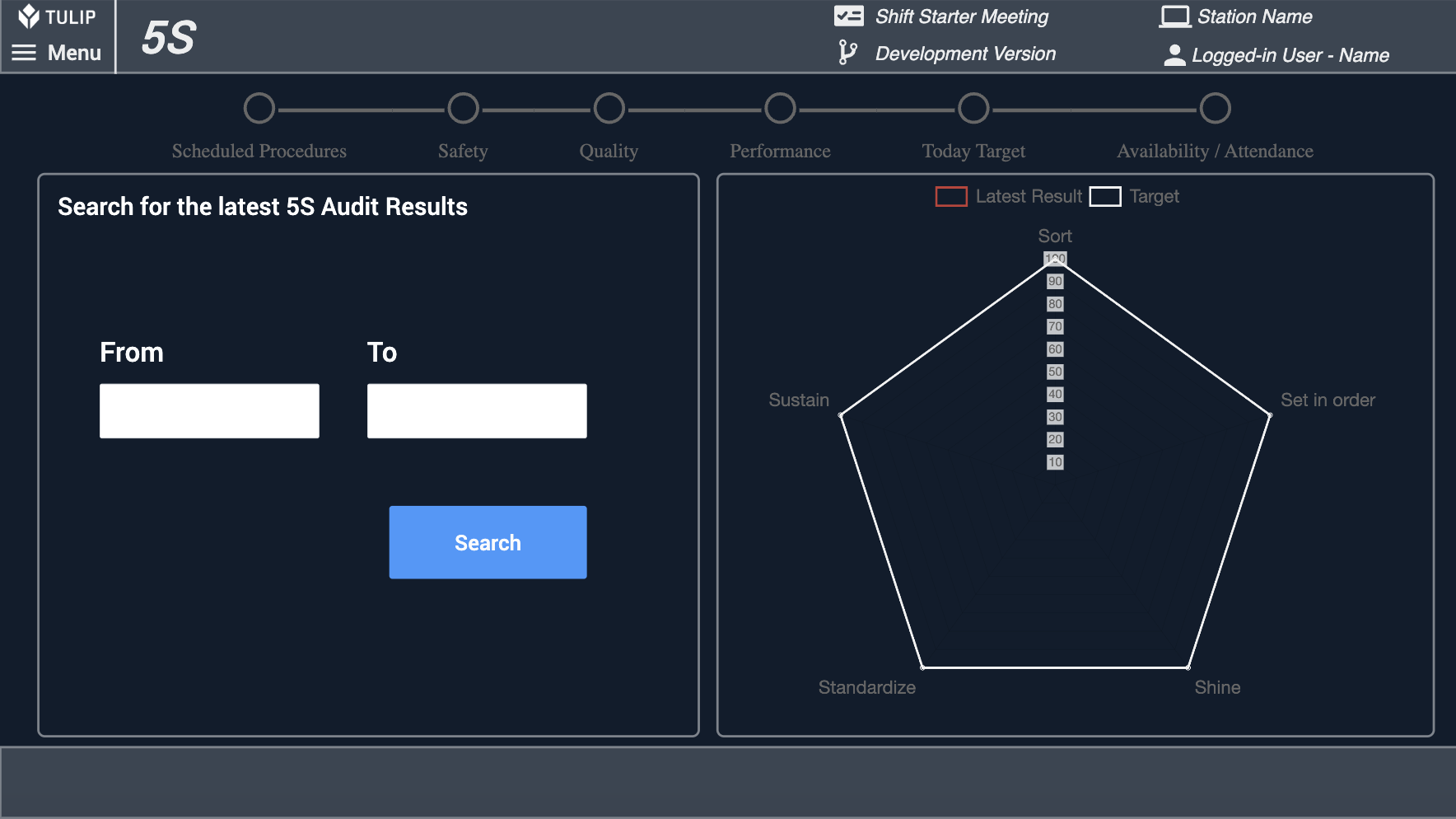
Further Reading
The following apps can enhance the user experience and efficiency when using the Shift Starter App:
- Order Tracking Template
- Safety Incident Manager
- Attendance App Suite
- 5S Checklist
- Performance Visibility Terminal
- Digital Tier Board
- Order Tracking Functional Example

.gif)
